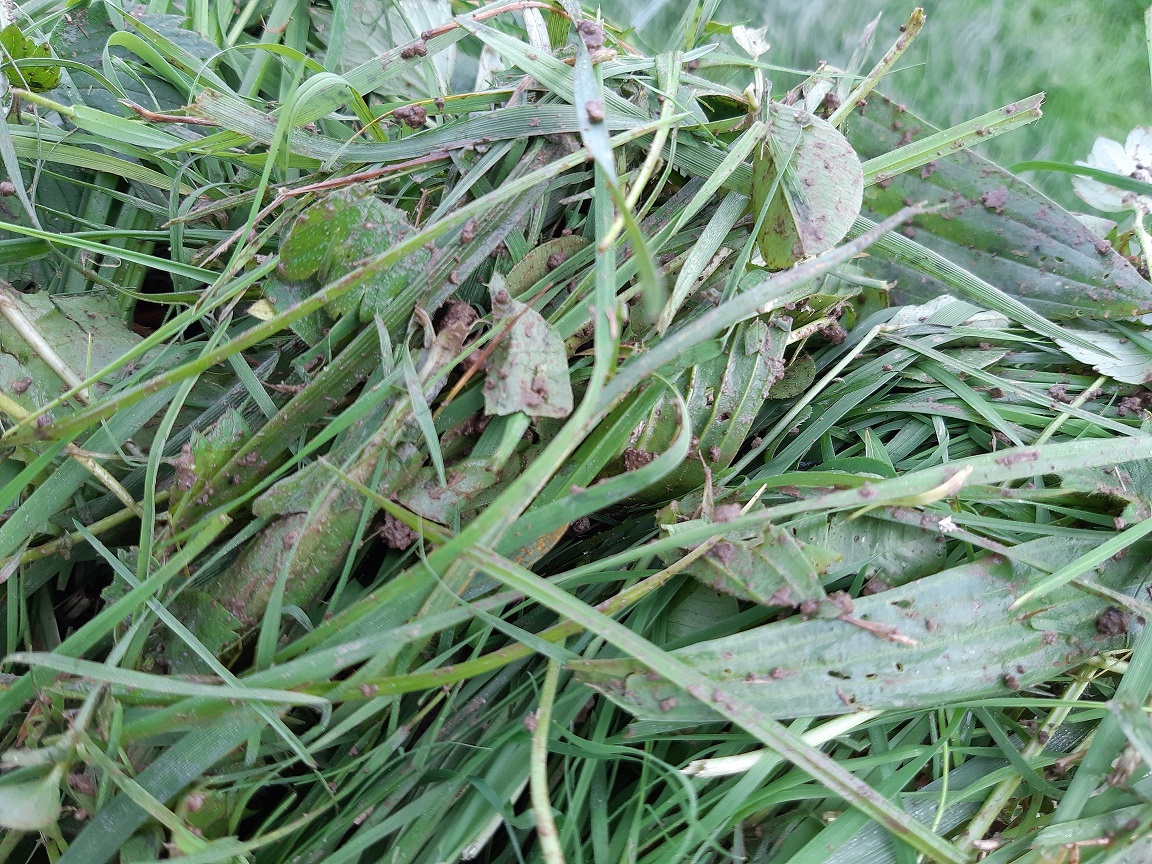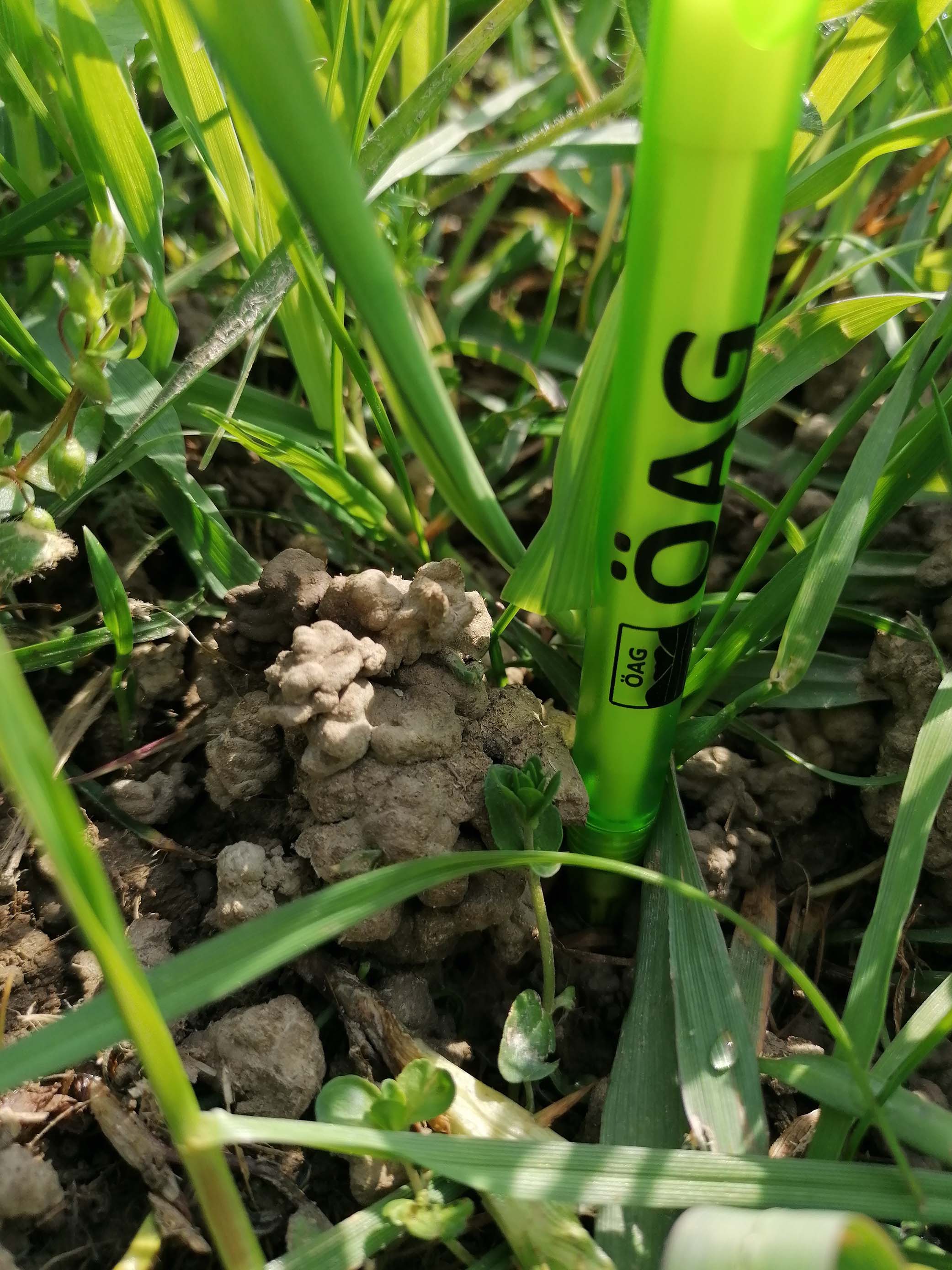Earthworms are the builders of fertile soils; they feed mainly on dead plant parts and work the soil to a depth of several meters. By mixing organic and mineral substances in conjunction with mucous secretion, they form a stable crumb structure in the soil (Pfiffner, 2013). There are several thousand species worldwide and around 400 are also native to Europe (Lehmitz, et al. 2014). Most of these species are of great importance for agriculture, although there are also black sheep among them. The black-headed earthworm (Aporrectodea nocturna) is a species of earthworm native to Western Europe that was able to spread through contaminated potting and ornamental plant soil.
Look
Black-headed earthworms grow up to 15 centimeters long and are colored brown to black in the front third of the back. Distinguishing it from other earthworm species in the field is often difficult because it can only be distinguished from the large meadow worm ( Nicodrilus longus ) with a magnifying glass. The dewworms that are common in our country differ from him in color; they are reddish-brown and become paler towards the back (Di Paolo, 2014). What is also striking is the flattened, blunt rear end of the dewworm.
In 2014, the occurrence of the black-headed earthworm was scientifically confirmed in Tyrol. According to reports and records, the black-headed earthworm may have arrived in western Austria in Vorarlberg in the 1960s. In addition to Vorarlberg and Tyrol, regional occurrences are also known in Salzburg, Carinthia, Lower and Upper Austria (Hohla, 2021). In contrast to their natural areas of origin, in newly populated regions they cause major problems on grassland areas but also on sports fields and private gardens.

Habitat
In the summer months, the worms live or rest in deeper layers of soil and are hardly noticed. However, in the wetter and cooler spring and autumn months they come to the top layers of the soil and bring large amounts of feces to the surface of the soil through their burrowing activity. The special feature is that the droppings are piled up in towers up to 8 cm high, which adhere strongly to the grassland plants in wet weather (Meyer, 2015). By sticking to the plant parts, serious feed contamination occurs in the affected areas, especially in the first and last cuts. In addition to fodder contamination, the accessibility of the areas, especially on slopes, is also severely impaired (Greisberger, 2019).
regulation
A number of practical studies have already been carried out in the federal states of Tyrol and Salzburg to regulate black-headed earthworms. In Upper Austria, another attempt was made in 2021 to push back the black-headed earthworms using different methods. The effects of different mechanical tillage, grazing with cattle and free-range pigs should be examined. For this purpose, the area was visited on April 26th and the initial population of worms was recorded. For this purpose, a square meter frame was placed four times and the plants within the frame were removed in order to be able to find the worms. The sprouting from the soil was carried out using 40 liters of a 0.2% formaldehyde solution, which was poured in several stages using a watering can. An average population density of 205 worms per m² was found, with dewworms and black-headed earthworms being found. After the survey, mechanical soil cultivation was carried out on 25*30 m sub-areas, on one sub-area with the operator's rotary harrow (cultivation depth approx. 15 cm) and on a second sub-area with a rotor reversible harrow from the Upper Austria machine ring (cultivation depth > 20 cm).
In both cases, a double pass was made and then sown. In the same week, the LFS Schlierbach built a mobile pigsty, fenced in around 600 m² and housed 8 pigs (reduced to 4 pigs after a few weeks). The remaining area was used as intensive pasture throughout the summer. In order to be able to determine the effectiveness, part of the area was left completely untreated. The effects of the treatments were collected on October 21st. From a purely visual perspective, a lower proportion of manure could only be observed on the surface of the area treated with the rotor reversible harrow. To determine the number of worms, three square meters were sampled for each variant.
In the untreated area, the number of worms was slightly higher than in spring, with an average number of 285 worms found per m². In the mechanically cultivated plots, the average number of worms was significantly lower, with 84 (rotor harrow) and 130 (power harrow) worms found. The grazed area had an average number of worms of 166 worms, although the results here varied widely. The pig run could not yet be sampled using the formaldehyde method because the pigs were still on the area at the time of sampling.
Results
The results show that mechanical tillage can push back the worms in the short term, but choosing when to till the soil is difficult. The challenge is that worms are close to the surface, especially in moist soil conditions, and mechanical processing is not possible or only possible to a limited extent at this point. The use of plant protection products to reduce the black-headed earthworm population on affected areas is not permitted. If permanent grassland is subsequently created again, a long-term effect is unlikely, as it can be expected that the worms will multiply quickly again. Grazing the areas does not displace the worms, but the growing food can be consumed by the animals in spring and autumn with less pollution. Claw problems are also reported when grazing heavily affected areas for long periods of time. The effects of outdoor pigs on worms will be assessed next spring. This regulation is possible on a small area, but can be expanded to larger areas through coupling.

As the experiments show, there is no patent recipe for regulating the black-headed earthworm. It is therefore particularly important to prevent an infestation. Garden waste should not get into the meadows via the manure heap and caution should be exercised when transporting earth material, even for smaller purposes. In this way, black-headed earthworms and their egg cocoons can be transported quickly and easily over long distances and infest new grassland areas.
Authors
literature
- Di Paolo, F. (2014). Black-headed earthworm. Appenzell Innerrhoden Agriculture and Forestry Department.
- Greisberger, M. (2019). Black-headed earthworm causes feed pollution in grassland. Available at: https://sbg.lko.at/schwarzkopfregenwurm-sorge-im-gr%C3%BCnland-f%C3%BCr-futterreinigung+2400+3015607
- Hohla, M. (2021). The black-headed earthworm (Aporrectodea nocturna) in Upper Austria – the “black sheep” among earthworms? ÖKO L 43/1 (2021): 26-35. Available at https://www.flora-deutschlands.de/Publikationen/internet_publikationen.htm
- Lehmitz, R. Römbke, J. Jänsch, S. Krück, S Beylich, .A. Graefe U. (2014) Checklist of earthworms (Oligochaeta: Lumbricidae) from Germany, Zootaxa, 3866 , 2 , 221–245.
- Meyer, E. (2015). Black-headed earthworm. Large amounts of earthworm castings in the garden lawn. Available at: https://gruenlandviehwirtschaft.at/images/Gruenes_Tirol_Schwarzkopfregenwurm_in_Gaerten_Meyer_opt.pdf
- Pfiffner, L. (2013): Leaflet earthworms. Research Institute for Organic Agriculture -FiBL. Available at: http://www.bodenseeakademie.at/Merkblatt_Regenwuermer_2013_Pfiffner.pdf
team







